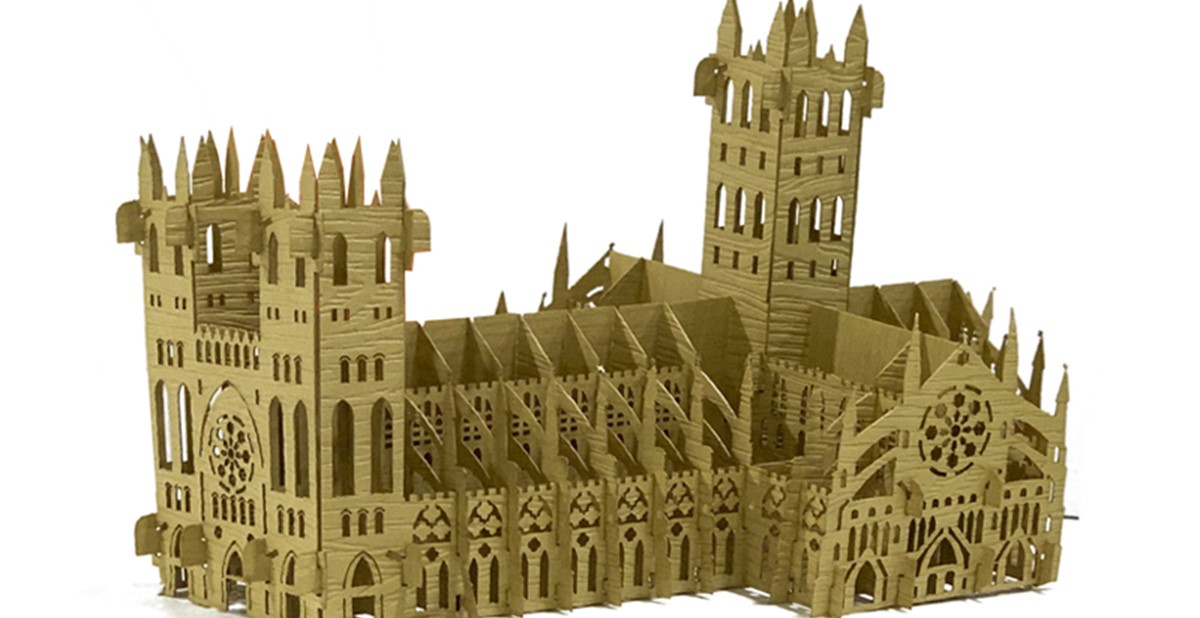It’s In The Cards

The laser-cut designs and intricate precision of Chao Cards’ 3D, handcrafted, pop-up greeting cards are a testament to the endless creativity and potential of promotional products. It seems that with each fresh look at one of the supplier’s custom cards—which can be fully personalized for any occasion, whether it’s a new business partnership, a nonprofit’s request for donations, a wedding announcement or a restaurant’s grand opening—the recipient notices something new. Perhaps it’s the cuts that connote blades of grass, the slits that represent the fine creases of a woman’s dress, or the angles that make up the roof of a historic building. Either way, the cards manufactured by the Orlando, Florida-based supplier are one of a kind.
A true reflection of the product, Chao Cards’ name is a welcoming gesture. In Vietnamese and Japanese—the supplier’s manufacturing plant is in Vietnam—“chao” is a greeting that means “hello”; and a salutation with similar renditions in other languages, including Italian, Swiss-German and French (“ciao”), Spanish (“chau”) and Finnish (“tsau”). This adds to the cards’ representation as universally understood, memorable offerings.
The origin of the cards’ designs is rooted in origami, the process of folding paper, and kirigami, the process of folding and cutting paper, both with the intent to create art. The term “origami” comes from the Japanese root words “ori,” meaning “to fold,” and kami, meaning “paper,” and is thought to have originated in Japan during the sixth century, or 501-600AD. So with every Chao Card, recipients carry with them an art form that is more than 1,500 years in the making—with a modern twist: all of the cards are made using machinery that cuts the designs meticulously, though they are still assembled by hand.
PPB spoke with Dat Dang, the founder and president of Chao Cards, to learn more about the process and the company’s history.
What inspired you to found Chao Cards, and where did you come up with the concept for your business?
I was introduced to these cards by a family friend back in 2014. I had seen these pop-up cards before, especially in Asia, where they are very popular. After looking at the cards, I realized there was both a market and an opportunity for them in the United States. I then contracted with a factory in Vietnam to see if they could custom-design various cards for me. With more than 20 years of manufacturing experience working with products, I saw that these cards are not your typical cards, but they bring value through the unique pop-up. Seeing the value through the customization, its true form of art and the long shelf life, I knew it was a natural fit for various industries.
Can you share with us the history of origami and kirigami, the origins of Chao Cards?
Although they are very similar, origami and kirigami have some slight differences. Origami is the Japanese art of folding paper into decorative shapes, while kirigami is a form of origami that includes cutting paper and assembling without glue, rather than just folding the paper. Both origami and kirigami grew from Japanese culture and became very popular in almost all of Asia. Vietnam has a rich history of unique, traditional, handcrafted art, such as embroidery—the art of stitching thread into an image—and sand art, the art of pouring colored sand and powdered pigments to form a sand painting. Paper art is another common form of handicrafts in Vietnam that are inspired by kirigami and origami, which is then converted into a card. This is where Chao Cards was founded.
How are the cards made, how big is the average order and how long does it take to produce?
Our pop-up cards are 100 percent customizable. Starting with our client’s ideas, we work with them to understand the intent of the card (self-promotion, thank-you card, etc.) From the client’s ideas, we send the design through our special software, which creates the artwork. The artwork is then made into a visual rendering, which must be approved by the client. Once the visual rendering is finalized, production of the cards begins. The paper is first laser-cut, and then each piece is hand-assembled to create our beautiful pop-up cards. Our minimum order is 120 cards, with production time for each order being about two weeks.
Why did you decide to open the Chao Cards factory in Vietnam, and what are the benefits of working from this location?
As a refugee from Vietnam, it has always been my dream to help the land I came from. With a rich history of handcrafted products and the skillset of the artisans, it was a natural fit for us to start up Chao Cards in Vietnam. In addition, we are able to contribute to the continuation of the Vietnamese tradition of handcrafts to future generations.


 Chao Cards works with their clients to develop a design based on the idea or intent of the card. The concept is sent to Chao Cards’ software, where the artwork is created, along with a virtual rendering.
Chao Cards works with their clients to develop a design based on the idea or intent of the card. The concept is sent to Chao Cards’ software, where the artwork is created, along with a virtual rendering.


Once the rendering is approved, production begins with laser-cutting the paper.


Then, each piece is hand-assembled to completion.

 The completed cards are then placed into special packaging based on the client’s specs.
The completed cards are then placed into special packaging based on the client’s specs.

Founding Date: September 2016
Principal: Dat Dang, founder and president
Average number of cards manufactured per month: 30,000
Most popular item: architectural cards
––––––––––––––––––––––––––––––––––––––––––––––––––––––––––––––––––––––
Danielle Renda is associate editor of PPB.

